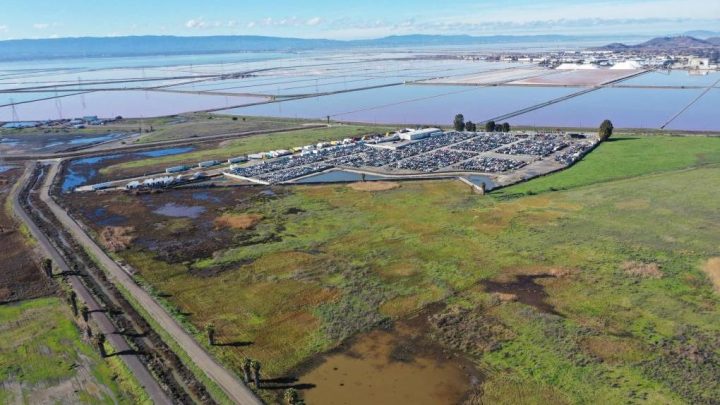
Wetlands or housing? Climate change pressures shoreline development plans.
Wetlands or housing? Climate change pressures shoreline development plans.

As the world grapples with how to slow down the harmful effects of climate change, there are natural solutions globally and even here in the United States.
Wetlands — that squishy terrain between lakes and oceans filled with reeds, birds and even alligators — can do a lot to prevent flooding as seas rise.
But people have obliterated marshes in places like Florida, Mississippi and Louisiana to build homes and cities. There are efforts to restore them across the country, but that often involves a fight. It frequently comes down to money and development.
In California, right on the south edge of San Francisco Bay is the city of Newark, home to around 50,000 people. Like most parts of the region, it’s dealing with dueling crises of affordable housing and the impact of the climate crisis.
In the city are two patches of land where developers want to build more than 600 homes for middle-income residents. (The median home price in the area is $1.2 million.) One of the lots is mostly empty land and the other is a pick-‘n-pull auto yard.
Longtime Newark resident Taran Singh calls this the most at-risk part of Newark. Instead of homes, Singh would rather see the area restored to its natural habitat so it can soak up rising seas.
“The bay is going to push more water to the shore, and that would mean these houses built on the edge of the bay are going to get flooded,” he said.
Scientists project that seas could rise by at least a foot by 2050 and over 3 feet by 2100. That alarms Singh because he wants this area to be here for his 11-year-old son when he grows up.

“I want him to enjoy the environment we have, but also, when I’m no longer here, I want him to remember that I stood up for something that I valued,” said Singh.
Next year, the city could move to restore this area instead of building hundreds of American dream-style houses with big yards. If that happened, the land would become part of the less than 15% of wetlands remaining in the Bay Area. During a king tide last year, water reached the property’s southern edge.
“In 2050, when everything is significantly higher than it is now — the sea-level rise — those areas are going to be inundated most of the time,” said Eric Buescher, an attorney with the environmental watchdog group San Francisco Baykeeper.
Restoring this land could be a climate solution to protect the region from surging seas. It could also help save the region millions of dollars by not having to build sea walls or levees to keep water out, noted San Jose State environmental studies professor Lynne Trulio.
“There is not enough dirt to protect the entire Bay Area from sea-level rise when it really starts cranking, you know, to build giant levees,” she said. “Here’s a place where we wouldn’t have to do that. It has this topography that really allows the marsh to move in.”
These potential developments are at the heart of California’s economy: Housing and preparing for climate change. The Newark developers are considering it by planning to raise the homes by 14 feet.
“We’ve tried mightily to make sure that we find a commonality between environment and development,” said Evan Knapp with Integral Communities, one of the two companies seeking to develop the area. “I think this is one of those sites where, when you start checking the boxes, it’s an overwhelming positive for the city.”
This issue of homes versus wetlands isn’t unique to Newark. Developers around the country want to satisfy people’s desire for beachfront living. But for Taran Singh, building hundreds of homes on the shore only ensures calamity.
“To me, this land means something more than just a piece of land,” he said. “It means to me that we care for the world as human beings. It is not just that this is a place we should just build.”
The Newark City Council will weigh in on this area’s future within six months. Cities and developers across the state are paying close attention to what happens in Newark because the outcome could foreshadow what California values as the shoreline rises.
There’s a lot happening in the world. Through it all, Marketplace is here for you.
You rely on Marketplace to break down the world’s events and tell you how it affects you in a fact-based, approachable way. We rely on your financial support to keep making that possible.
Your donation today powers the independent journalism that you rely on. For just $5/month, you can help sustain Marketplace so we can keep reporting on the things that matter to you.












